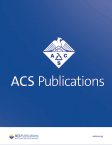Abstract PO5-24-02: Interferon-induced bone marrow stromal antigen 2 (BST2) is a functional tumor-initiating cell marker in triple-negative breast cancer
IF 2.9
Q2 PUBLIC, ENVIRONMENTAL & OCCUPATIONAL HEALTH
引用次数: 0
Abstract
Background: A subpopulation of tumor cells known to have intrinsic resistance to therapies and contribute to metastasis function as “cancer stem”, or tumor-initiating, cells (TICs). TICs can be identified by various biomarkers, including fluorescent reporters for signaling pathways that regulate TIC function such as STAT signaling. However, standard TIC reporters have limitations. Their expression is unstable and there is no established method to follow TICs as they undergo cell state changes. Furthermore, we do not completely understand the transcriptional features of TICs. Improved methods of identifying TICs as well as the development of high-resolution transcriptional signatures are essential to understand TIC biology. An improved understanding of TIC biology can inform the development of novel therapeutics to selectively ablate the TIC compartment, thus improving response to standard cancer therapies. Methods: We screened a panel of PDX models to determine whether a STAT reporter identifies TICs in patient-derived xenograft (PDX) models. To augment existing STAT TIC reporters, we developed a two-component STAT signaling-specific lineage-tracing (LT) system. The first component labels active STAT signaling cells by expression of enhanced green fluorescent protein (EGFP+), followed by a self-cleaving P2A peptide and a TAM-inducible Cre-recombinase (4M67-EGFP-P2A-CreERT2). The second component is a constitutively expressed dual-color switching Cre-dependent reporter vector (EFS-loxPdsRedloxP-mNeptune2). We determined which LT cell populations (EGFP+/mNeptune2+, EGFP+/dsRed+, EGFP−/mNeptune2+, and EGFP−/dsRed+) from SUM159 xenografts functioned as TICs. To probe TIC transcriptional features, we performed scRNA seq on the two tumor models with STAT TICs and a PDX model that did not have STAT TICs. We performed lineage trajectory analysis and differential gene expression analysis to characterize candidate TIC transcriptional signatures. To confirm whether these transcriptional features are associated with TICs, we identified a biomarker of this cell state (bone marrow stromal antigen 2 [BST2]) and explored the relationship between this biomarker and TICs. Results: We identified four PDX models with STAT reporter activity, one of which had STAT TICs. We validated our LT system in several models both in vitro and in vivo, then demonstrated EGFP+/mNeptune2+ from SUM159 xenografts are enriched for TICs and that lineage-tagged cells (mNeptune2+) function as proliferative early progenitor cells. scRNA seq of three xenograft models uncovered a distinct antiviral cell state in all three models that represent a more highly enriched TIC subpopulation. Critically, transcriptional features were shared between the antiviral cell states across xenograft models. To determine whether cells in this antiviral state represent TICs, we FACS-enriched BST2 cells (an IFN-stimulated cell surface protein that was a marker of the antiviral cell state) and demonstrated enrichment of the TIC population by mammosphere formation assays and limiting dilution transplantation. We demonstrated that BST2 expression is increased in residual PDX tumors following chemotherapy. Furthermore, we demonstrated similar antiviral cell states are present in human breast cancer scRNA seq datasets. Conclusions: These data demonstrate TICs adopt an antiviral cell state in some triple-negative breast cancers, and BST2 is a function marker of TICs in this cell state. Therefore, targeting genes associated with this cell state or associated antiviral pathways may represent a therapeutic vulnerability to eliminate TICs in some breast cancers. Citation Format: Eric Souto, Ping Gong, John Landua, Ram Srinivasan, Lacey Dobrolecki, Abhinaya Ganesan, Michael Lewis. Interferon-induced bone marrow stromal antigen 2 (BST2) is a functional tumor-initiating cell marker in triple-negative breast cancer [abstract]. In: Proceedings of the 2023 San Antonio Breast Cancer Symposium; 2023 Dec 5-9; San Antonio, TX. Philadelphia (PA): AACR; Cancer Res 2024;84(9 Suppl):Abstract nr PO5-24-02.PO5-24-02摘要:干扰素诱导的骨髓基质抗原2(BST2)是三阴性乳腺癌的功能性肿瘤启动细胞标志物
背景:众所周知,肿瘤细胞中有一个亚群对治疗具有内在抵抗力,并能促进转移,即 "癌症干细胞 "或肿瘤启动细胞(TIC)。TIC可通过各种生物标记物来识别,包括调节TIC功能的信号通路(如STAT信号)的荧光报告物。然而,标准的 TIC 报告有其局限性。它们的表达不稳定,也没有成熟的方法来跟踪 TIC 的细胞状态变化。此外,我们还不完全了解 TIC 的转录特征。改进识别 TIC 的方法以及开发高分辨率转录特征对于了解 TIC 的生物学特性至关重要。加深对 TIC 生物学的了解有助于开发新型疗法,选择性地消除 TIC 区,从而改善对标准癌症疗法的反应。方法:我们筛选了一组 PDX 模型,以确定 STAT 报告器是否能识别患者异种移植 (PDX) 模型中的 TIC。为了增强现有的 STAT TIC 报告器,我们开发了一种由两部分组成的 STAT 信号特异性谱系追踪(LT)系统。第一部分通过表达增强型绿色荧光蛋白(EGFP+)标记活跃的 STAT 信号转导细胞,然后表达自裂解 P2A 肽和 TAM 诱导的 Cre-重组酶(4M67-EGFP-P2A-CreERT2)。第二部分是组成型表达的双色切换 Cre 依赖性报告载体(EFS-loxPdsRedloxP-mNeptune2)。我们确定了哪些来自 SUM159 异种移植的 LT 细胞群(EGFP+/mNeptune2+、EGFP+/dsRed+、EGFP-/mNeptune2+ 和 EGFP-/dsRed+)具有 TIC 的功能。为了探究TIC的转录特征,我们对两个有STAT TIC的肿瘤模型和一个没有STAT TIC的PDX模型进行了scRNA序列分析。我们进行了谱系轨迹分析和差异基因表达分析,以确定候选 TIC 转录特征。为了证实这些转录特征是否与 TIC 相关,我们确定了这种细胞状态的生物标志物(骨髓基质抗原 2 [BST2]),并探讨了该生物标志物与 TIC 之间的关系。结果:我们发现了四个具有 STAT 报告活性的 PDX 模型,其中一个具有 STAT TIC。我们在多个模型的体外和体内验证了我们的LT系统,然后证明了SUM159异种移植物中的EGFP+/mNeptune2+富集了TICs,并且系标记细胞(mNeptune2+)具有增殖性早期祖细胞的功能。重要的是,不同异种移植模型中的抗病毒细胞状态具有共同的转录特征。为了确定这种抗病毒状态下的细胞是否代表TIC,我们对BST2细胞(一种IFN刺激的细胞表面蛋白,是抗病毒细胞状态的标记)进行了FACS富集,并通过乳球形成试验和限制稀释移植证明了TIC群体的富集。我们证明,化疗后残留的 PDX 肿瘤中 BST2 表达增加。此外,我们还证明人类乳腺癌 scRNA 序列数据集中也存在类似的抗病毒细胞状态。结论:这些数据表明,在一些三阴性乳腺癌中,TIC 采用了抗病毒细胞状态,而 BST2 是处于这种细胞状态的 TIC 的功能标记。因此,靶向与这种细胞状态或相关抗病毒通路有关的基因可能是消除某些乳腺癌中 TIC 的治疗漏洞。引用格式:埃里克-索托、龚平、约翰-兰杜瓦、拉姆-斯里尼瓦桑、莱西-多布罗莱基、阿比纳亚-加内桑、迈克尔-刘易斯干扰素诱导的骨髓基质抗原 2(BST2)是三阴性乳腺癌的功能性肿瘤启动细胞标志物[摘要]。在:2023 年圣安东尼奥乳腺癌研讨会论文集;2023 年 12 月 5-9 日;德克萨斯州圣安东尼奥。费城(宾夕法尼亚州):AACR; Cancer Res 2024;84(9 Suppl):Abstract nr PO5-24-02。
本文章由计算机程序翻译,如有差异,请以英文原文为准。
求助全文
约1分钟内获得全文
求助全文
来源期刊

ACS Chemical Health & Safety
PUBLIC, ENVIRONMENTAL & OCCUPATIONAL HEALTH-
CiteScore
3.10
自引率
20.00%
发文量
63
期刊介绍:
The Journal of Chemical Health and Safety focuses on news, information, and ideas relating to issues and advances in chemical health and safety. The Journal of Chemical Health and Safety covers up-to-the minute, in-depth views of safety issues ranging from OSHA and EPA regulations to the safe handling of hazardous waste, from the latest innovations in effective chemical hygiene practices to the courts'' most recent rulings on safety-related lawsuits. The Journal of Chemical Health and Safety presents real-world information that health, safety and environmental professionals and others responsible for the safety of their workplaces can put to use right away, identifying potential and developing safety concerns before they do real harm.
 求助内容:
求助内容: 应助结果提醒方式:
应助结果提醒方式:


